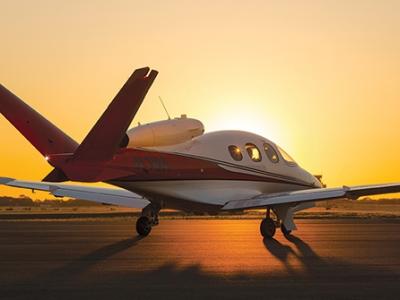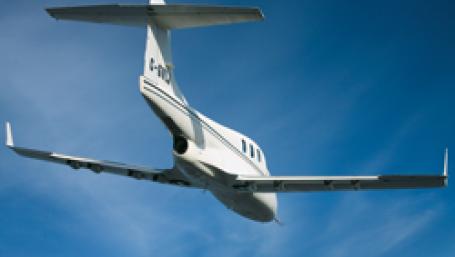
More than 140 Cirrus Vision Jets have been delivered since the model entered service in late 2016. Another 30+ aircraft are in various stages of completion, awaiting their new owners. Operators praise the aircraft for its cabin comfort, outward visibility, handling ease and ergonomic flight deck design. They like its advanced safety features, such as its ballistic Cirrus Airframe Parachute System (CAPS) and upcoming Safe Return emergency autoland function.
“The airplane is so much built for the single pilot,” says a well-known Red Bull Air Race pilot who also flies a Vision Jet for its owner. “Everything on the flight deck is perfectly positioned. Nothing is out of reach. It’s as though it were built just for me.”
- Top marks for comfort, safety, reliability and product support
Clean-sheet turbine aircraft often are plagued by dozens of teething pains, but that’s not true for the Vision Jet. Dispatch reliability has been solid. Just as importantly, when something goes amiss, Cirrus Aircraft is earning an excellent reputation for product support. Case in point: In April 2019, the FAA issued an emergency Airworthiness Directive that grounded serial numbers 0005 through 0109 due to possibly defective angle-of-attack (AOA) vane sensors that provide stall warning, stall barrier and low-speed awareness cues. Concurrently, Cirrus issued mandatory Service Bulletin SB5X-34-03 that required exchanging the original AOA sensors with improved units. The company quickly procured the new parts, expedited delivery to authorized repair stations and restored all aircraft to airworthy status within a few to several days, operators say.
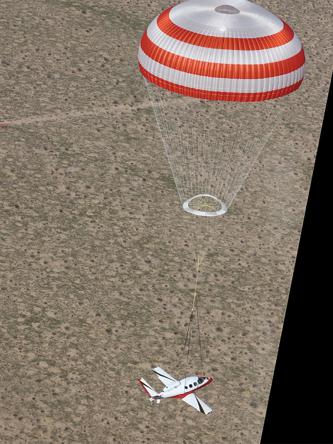
“Cirrus worked 24/7 to make things happen,” says Jon Gilbert, who flies s.n. 105 based in San Diego. He’s owned five Eclipse 500s and an Embraer Phenom 100. He still owns a Cessna 414 Chancellor, an airplane he’s had for more than two decades. However, he says it’s getting harder to obtain affordable insurance for the piston twin. That’s not a problem in his single-engine Vision Jet, which, he says, delivers “the most fun I’ve ever had in an airplane.”
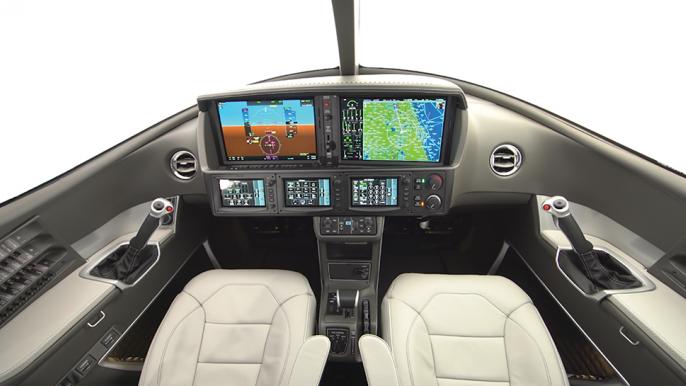
A professional pilot who flies a Vision Jet for a firm in Northern California says his owner bought the aircraft because of its safety features, particularly CAPS. He’s looking forward to upgrading to a newer model with Safe Return. Cabin comfort was a major selling point. The owner looked at both the Piper PA46 Meridian and the TBM 940, but he found their cabins too restrictive. He’s much more comfortable in the Vision Jet as it’s a full foot wider than competitively priced single-engine pressurized turboprops.
“It’s a great first jet. There is nothing easier. It fills a niche. There’s nothing like it,” says William Robertson, who flies an SF50 for a Georgia-based industrial and service sector construction company.

Demographics and Buy Decision
More than three-quarters of Vision Jet buyers upgraded from Cirrus piston single-engine aircraft. They say they were quite satisfied with their 170- to 200-KTAS airplanes, especially with the impressive product support provided by Cirrus. But they needed more speed, the ability to climb over weather and the comfort of a pressurized cabin.
Vision Jet represents the easiest entry into a pressurized turbine aircraft for SR20/22 pilots because it incorporates many of the same or similar design features as the piston aircraft, including the Perspective Touch flight deck powered by Garmin, side-stick flight controls, docile low-speed handling characteristics and large windows. The Williams International FJ33-5A turbofan, which produces as much as 1,846 lb. of thrust for takeoff, is equipped with full-authority digital engine controls (FADEC) and offers considerably lower workload for pilots than either the Lycoming or Continental piston powerplants that propel current production light aircraft or even the Pratt & Whitney Canada PT6A turboprop fitted with hydromechanical fuel controls.

The FJ33 offers carefree handling from start-up to shutdown as the FADEC provides over-speed, over-temp and over-thrust limit protections, enabling the pilot to spend more time looking out the windshield and less time babysitting the engine. Pilots new to the Vision Jet say this makes it much easier to fly than piston-engine or turboprop aircraft they’ve previously operated.
The Vision Jet’s safety features, including most notably CAPS, were strong purchase incentives. Automatic emergency descent mode, over- and under-speed envelope protections, and stall-warning stick shaker and pusher are among its other standard safety features. Newer models also have standard electronic stability and protection and an automatic wing level function activated by pressing a prominent blue button. Buyers were willing to forego higher-speed competitive jets or more-fuel-miserly turboprops for the Vision Jet’s safety features.
Cabin comfort and ease of entry and egress also factored into the purchase decision. The pilot’s chair slides forward to provide convenient access to the middle and aft passenger seats, plus a copilot seat occupant. Once the passengers are aboard, the pilot’s chair slides aft to provide easy entry for the pilot. From a seated position, the pilot can close the bottom and top halves of the clamshell door, then slide the seat forward onto the flight deck.
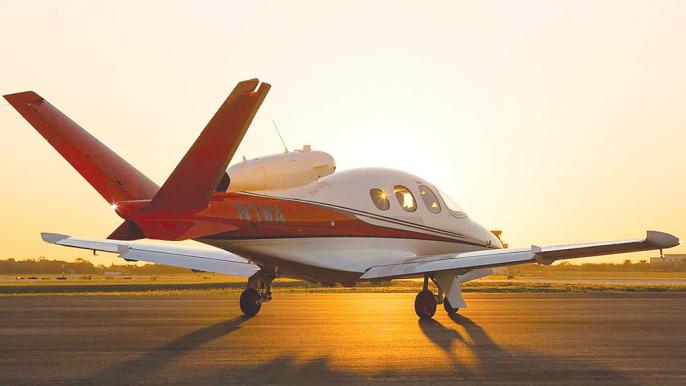
Purchase price was another factor. At $2.25 million to $2.75 million as typically equipped, the Vision Jet costs about half the price of an entry-level twin-turbofan aircraft and it’s less expensive than most competitive single-engine turboprops.
Some Vision Jet operators are trading up from their first-generation aircraft to second-generation models. The block point change was made at s.n. 94, starting in early 2019. The newer aircraft cruise 3,000 ft. higher, have better cabin pressurization, slightly more tanks-full payload and fly about 100 nm farther.
All but four of the 170+ Vision Jets are registered in the U.S. N-registered aircraft, however, are operated in Australia, Brazil and Guernsey, plus Germany, Israel, Italy and the Netherlands, along with South Africa, Switzerland and the U.K. Aircraft based outside the U.S. predominantly are flown by professional crews, typically for air charter, corporate or individual operators. However, within the U.S., owner/operators comprise the large majority.
Operating patterns vary widely, with utilization varying between 100 hr. and more than 300 hr. per year. Average stage length ranges between 250 and 600 nm. Most operators say they’re comfortable flying early models as far as 900 nm and second-generation aircraft 1,000 nm. Early models are limited to a maximum cruise altitude of FL 280, while follow-on models can cruise at FL 310. Block speeds for most missions are 300 nm/hr. First-generation aircraft can fly about 3 hr., 15 min. and land with comfortable reserves, while newer models stretch that figure by 15 min.

For short missions, operators say they ballpark fuel flows at 80 gph (536 pph) for the first hour and 70 gph (469 pph) for the second and third hours. As with SR20/22 aircraft, Vision Jet fuel flows are computed in gallons per hour rather than pounds per hour because Cirrus officials say operators buy fuel by the gallon and not by the pound.
Actual fuel flows on longer missions are closer to 75 gal. for the first hour and 60-62 gph at FL 310 for second-gen aircraft and 66-68 gph at FL 280 for their predecessors. The aircraft will cruise at 305 to 315 KTAS, depending upon OAT.
Operators report that current production aircraft are noticeably quieter inside the cabin than first-gen models. Cirrus installs Mid-Continent True Blue lithium-ion phosphate batteries in the former, affording much greater starting power than the original lead-acid batteries and saving considerable weight. Lithium-ion batteries indeed have triple the power density of lead-acid types. This allows the use of heftier acoustical insulation in aircraft but still results in a slight net empty weight savings. Notably, True Blue lithium-ion batteries use a different chemistry than older lithium-metal batteries that proved problematic aboard the Boeing 787 and Cessna Citation CJ4.
Early Vision Jets have noticeably higher sound interior levels than other entry-level turbofan aircraft, making use of active noise canceling headsets a virtual must. Current models, while being considerably quieter inside, allow passengers to use conventional headsets or earbuds for inflight entertainment.
Five Best Features
Respondents had various answers for their top-five strong points of their aircraft. All supported the Vision Jet as a safe, simple, comfortable, easy-to-fly aircraft. “It has a great safety record and it’s the easiest single-pilot turbine aircraft in production,” said one pilot.
Serial number 34 is the only aircraft of the type that’s been involved in an incident. It went off the runway and into a snowbank at Nuuk, Greenland, during a delivery flight from the U.S. to Germany in February 2018. The cause was loss of brake fluid to the left wheel brake. Both occupants escaped injury. The aircraft suffered minor damage, which was repaired and then it was returned to service.
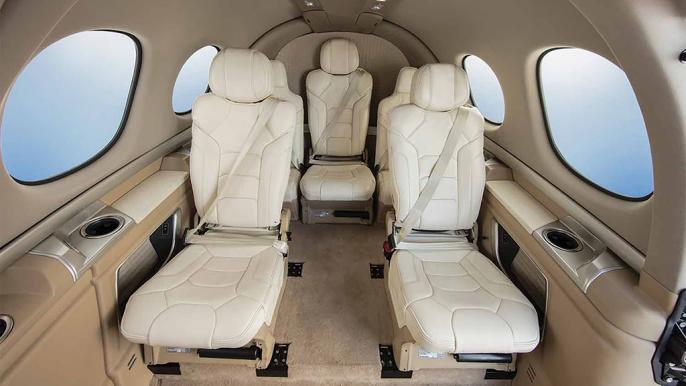
“Avionics provide easy access to the information I need,” says Gilbert. “It’s just comfortable,” says Robertson, adding “the cockpit is like a flying iPhone.” The aircraft has three landscape orientation touchscreens mounted immediately below the two large-format display screens. This allows the pilot to select one for flight plan control, another for radio management and a third for access to systems. Many other touchscreen configurations can be chosen at the discretion of the pilot.
The flight deck and cabin also have the ambiance of a high-end automobile, operators say. The layout is simple, clean and intuitive.
Pilots need an SF50 type rating to fly the aircraft. Cirrus provides initial and recurrent training at its Knoxville, Tennessee, facility. Before arrival, customers are afforded access to a comprehensive, online ground school system. Simulator training incorporates scenarios that challenge customers to make decisions based on real-world conditions. For instance, an engine failure in IFR conditions might involve gliding the aircraft to the nearest suitable VFR divert landing facility. But that requires arriving overhead the airport at 3,000 ft. AGL in VFR conditions to execute a flameout, gliding approach. If the weather deteriorates, or if the aircraft is beyond gliding distance to the divert field, circumstances may dictate gliding to a clear area and deploying the airframe parachute. Recommended speed for CAPS activation is 135 to 145 KIAS at an altitude of 1,000 to 2000 ft. AGL.
Operators say Vision Jet pilot instruction emphasizes train-to-proficiency rather than train-to-cost. Customers who need extra help to attain proficiency are afforded extra sim sessions and briefing periods.
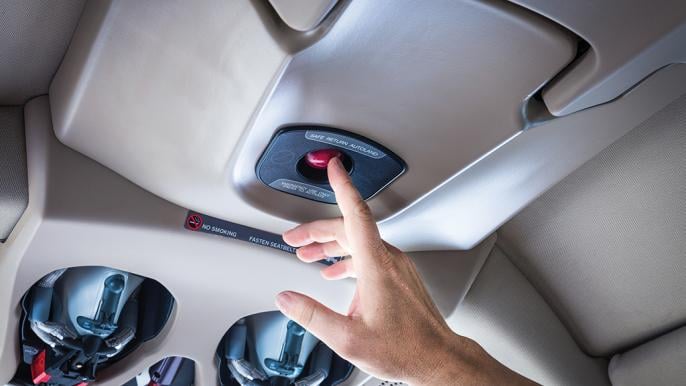
“This is the best training I’ve ever been to,” says the Northern California pilot. “I love the scenario-based training. The online training, including the videos, also was great,” says Gilbert. “The Knoxville training was great, but some of the new guys [instructors] were still getting acquainted with the airplane,” says Robertson. After initial type training is complete, customers are assigned a mentor pilot to provide supervised operating experience until they’re comfortable flying the Vision Jet alone.
Operators also said the optional autothrottle, executive second-row seating with foldout worktables, plus center storage console, and rear passenger climate controls added safety, comfort and utility to current production models. Owners of second-gen models are especially appreciative of the increased altitude performance, 10% greater range and noticeably quieter cabin. “This is the aircraft they should have built at the start,” said one operator who had upgraded from an early model.
Five Worst Features
The Vision Jet is comfortable, convenient and safe, but its performance is limited. It lives up to its billing as the lowest, slowest and shortest-range turbofan aircraft. Typically equipped, it can carry a single pilot and one passenger 1,171 nm with full fuel. Fill all the seats and range drops to 461 nm. Average long-range cruise speed on such missions is 233 KTAS, 80+ kt. slower than maximum cruise speed.
But the aircraft can carry a pilot and three passengers 600 nm at high-speed cruise. These missions are just over 2 hr. long and they cover the bulk of the trips flown by most operators.
Contaminated runway performance is not a strong suit for the SF50, even though max Vref is 85 KIAS with full flaps. Sea-level, standard-day landing distance is 3,011 ft. at max landing weight. It takes at least 15% more runway if the surface is wet. Factored landing distance on a wet runway is 5,783 ft. The aircraft lacks ground spoilers and anti-skid brakes, thus it’s imperative to land on speed and in the touchdown zone.
Takeoff performance also is modest. The aircraft needs 3,192 ft. of runway when departing a sea-level, standard-day airport at its 6,000-lb. MTOW. When operating from a 5,000-ft. elevation, ISA+20C airport, it needs 5,956 ft. of runway.
Some Vision Jet operators also say that Cirrus has flooded them with 150+ Service Bulletins, such as a remedy for moisture intrusion into the CAPS bay, perceived shortcomings of the pitch trim system, and others pertaining to brakes, the routing of static lines and possible wheel bearing replacement. Operators who have ready access to authorized Vision Jet service centers say the plethora of bulletins isn’t much of an inconvenience, as most are covered under warranty. But people based far from authorized maintenance facilities say it can be a nuisance ferrying their aircraft to and from their home bases.
Other nits include occasional faulty bleed-air pressure regulating and shut-off valves, balky automatic fuel tank switching valves and loose interior trim bits and pieces. Fuel quantity indications may be less than accurate as the first 10 to 20 gal. are consumed, and when the air-conditioner condenser door is open in flight, it causes noticeable rumbling in the cockpit. A few operators also say they wish they could use a GPU to charge weak batteries when the airplane has been sitting idle for several days.
Operators of first-gen models also didn’t like the need to use ground power to start the aircraft at temperatures below -18C/0F because of limited performance of lead-acid batteries at cold temperatures. That restriction has been removed on newer aircraft because of the higher performance of its lithium-ion batteries at low temperatures.
On Balance
In little more than three years the Vision Jet has earned high marks for attention to design details, dispatch reliability, product support and factory-sponsored pilot training. Only 15 months into production, Cirrus introduced the second-generation version, offering stronger cruise performance, more powerful avionics, optional autothrottle and enhanced lithium-ion batteries.
Cirrus also is one of the few entry-level turbine aircraft manufacturers to offer tip-to-tail hourly comprehensive maintenance service programs that cover almost all direct operating costs, including engine reserves. Most operators we contacted have enrolled in one of the Jet Stream service programs. If a block time Jet Stream program is purchased at the time of aircraft delivery, it can cost as little as $350 per hour on average for people flying 300 hr. per year.
Cirrus has a track record of introducing block point product improvements every year or so. Customers are likely to see subsequent Vision Jet versions offering stronger performance, more range/payload flexibility, upgraded systems and even more capable avionics.
Considering that the SF50 Vision Jet is Cirrus Aircraft’s first turbine-powered, retractable landing gear, pressurized aircraft, the favorable marks it’s earning with operators is all the more impressive. This is the product of a general aviation manufacturer that understands customer experience involves much more than basic aircraft ownership. Post-delivery product support, top-notch pilot training and regular product improvements are just as essential as aircraft design. The Vision Jet has created a new niche in general aviation, one in which it faces virtually no competition for years to come.






